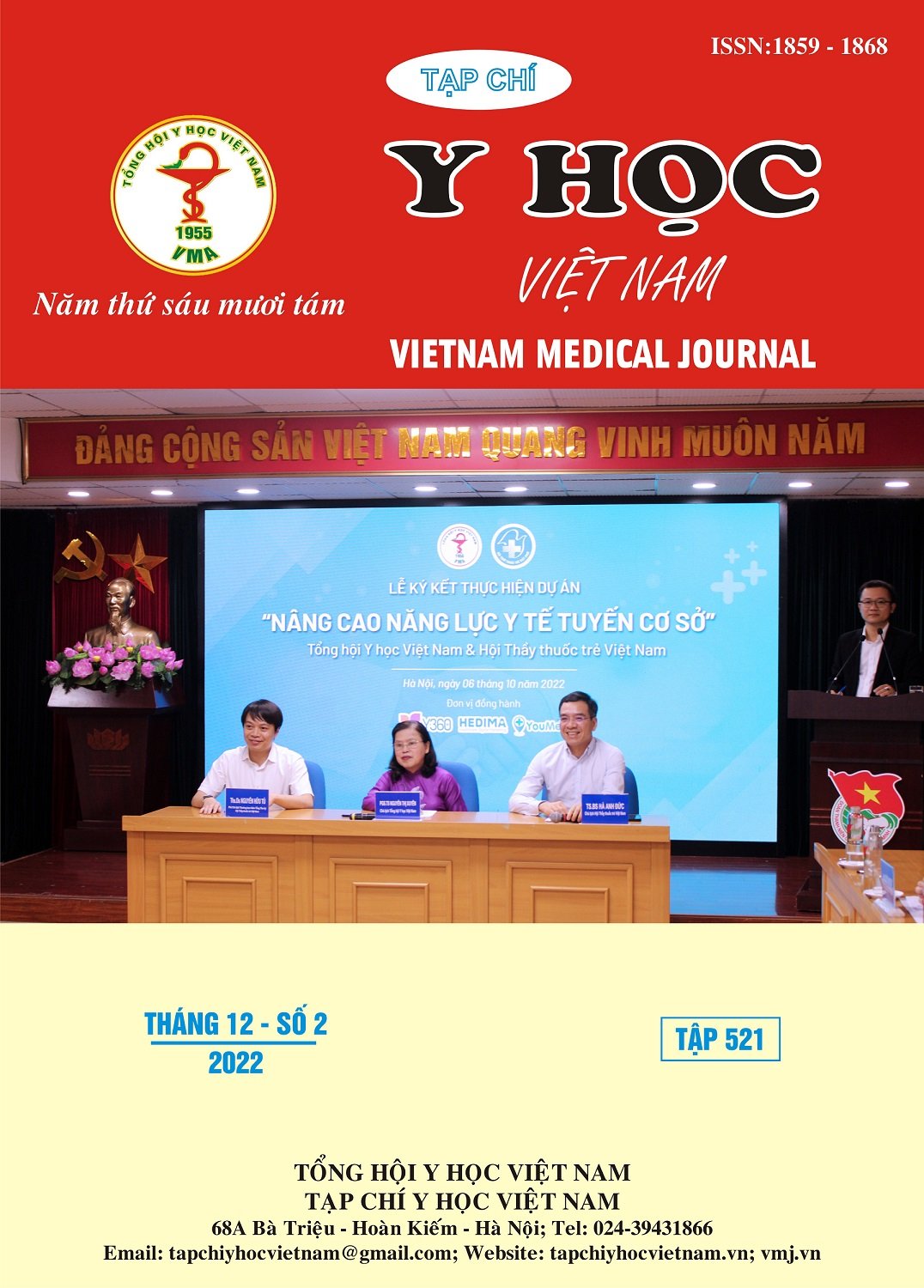EVALUATING THE VARIATION OF INTRAOCULAR PRESSURE AFTER BLUNT OCULAR TRAUMA
Main Article Content
Abstract
Objective: To evaluate the variation of intraocular pressure (IOP) after blunt ocular trauma. Subjects and research methods: Descriptive study on 43 blunt ocular trauma eyes of 43 patients who had examination and treated at the Eye Trauma department of Vietnam Nation Eye Hospital from 12/2021 to 5/2022. Results: The male/female ratio in the study was approximately 5.5/1. The mean age was 43.56 ± 16.83 years old (the oldest was 73 YO and the youngest was 8 YO). In which, the group with the highest rate was 18 – 60 years old (74.4%), this was the working age group. Most of the cases of injury were occupational accidents, accounting for 55.8%. The mechanism of injury was mostly direct force, accounting for 93%, and only 7% were indirect injuries. Most of the patients presented with very poor vision, the highest rating group was VA < CF1m, accounting for 62.8% (24/43), the group of VA from CF1m to ≤ 20/70 was 35% (15/43), 1 patient with vision loss and no one had BCVA ≥ 20/50. At presentation, there were 8 eyes with low IOP (18.6%), 8 eyes with normal IOP (18.6%) and 27 eyes with high IOP (62.8%). In our research, blunt trauma damaged many parts of the eyeball, leading to changes in IOP. In which, the percentage of hyphema was 48.9% (21/43), vitreous hemorrhage was 34.9% (15/43), anterior chamber angle damage accounted for 69.8% (30/43), lens damage accounted for 76.7% (33/43) and cyclodialysis cleft was only 13.9% (6/43). Conclusion: Blunt ocular trauma causes damage to many parts of the eyeball in many levels, then leads to complicated IOP changes in the traumatized eye.
Article Details
Keywords
Blunt ocular trauma, variation of IOP
References
2. Bhagat P, Gupta P, Agrawal N, Mansuri M. Glaucoma following blunt trauma : an epidemiological and clinical study. Journal of Evolution of Medical and Dental Sciences. 2014;3:2926-2943. doi:10.14260/jemds/2014/2226
3. Vũ Huy Quang. Nghiên Cứu Đặc Điểm Lâm Sàng Của Tăng Nhãn Áp Sớm Sau Chấn Thương Đụng Dập Nhãn Cầu và Kết Quả Điều Trị. Luận văn thạc sỹ Y học. Trường Đại học Y Hà Nội; 2016.
4. Ding C, Zeng J. Clinical study on Hypotony following blunt ocular trauma. Int J Ophthalmol. 2012;5(6):771-773. doi:10.3980/j.issn.2222-3959.2012.06.21
5. Bai HQ, Yao L, Wang DB, Jin R, Wang YX. Causes and treatments of traumatic secondary glaucoma. Eur J Ophthalmol. 2009;19(2):201-206. doi:10.1177/112067210901900205
6. Razeghinejad R, Lin MM, Lee D, Katz LJ, Myers JS. Pathophysiology and management of glaucoma and ocular hypertension related to trauma. Surv Ophthalmol. 2020;65(5):530-547. doi:10.1016/j.survophthal.2020.02.003


